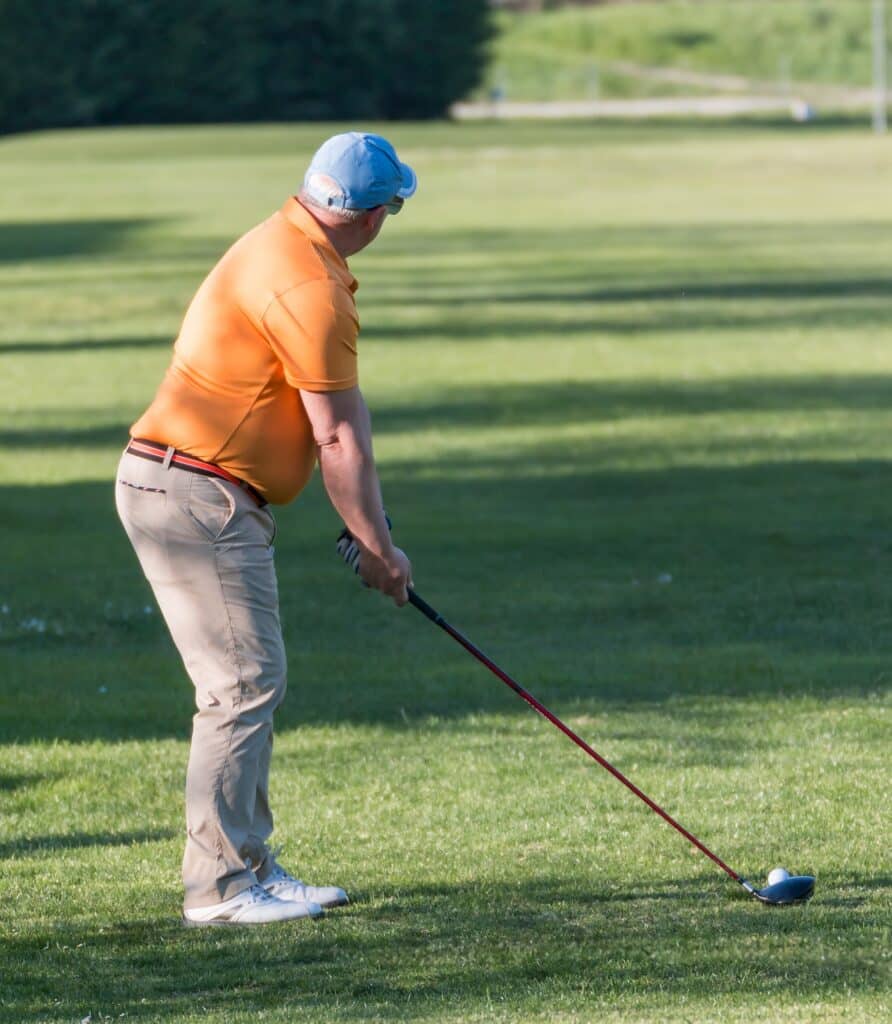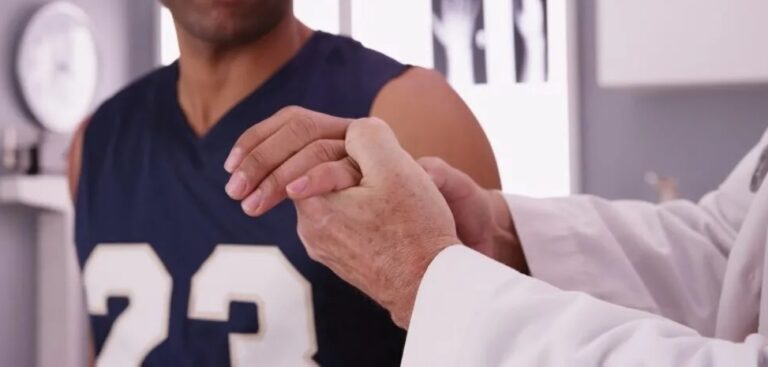This website uses cookies so that we can provide you with the best user experience possible. Cookie information is stored in your browser and performs functions such as recognising you when you return to our website and helping our team to understand which sections of the website you find most interesting and useful.

We are an orthopedic and sports medicine practice.
Our patients who play sports sometimes suffer occasional unavoidable injuries. Generally, conservative treatments—splints, medications, injections, and physical therapy—are all you need to get back in the game.
When non-surgical treatments are not going to help and more advanced care is necessary, we offer the best options for surgery.


Advanced Orthopedic Surgeon Dr. Stephen W. Pournaras, Jr., is a sports medicine orthopedic specialist who diagnoses and treats sports-related injuries and musculoskeletal conditions. His expertise in orthopedic surgery and sports medicine allows him to provide comprehensive care for athletes and active individuals of all ages and skill levels.
Diagnosis: Dr. Pournaras uses a combination of medical history, physical examination, imaging studies (such as X-rays, MRI, and CT scans), and diagnostic procedures to assess the extent and severity of your injuries.
Treatment: Once a diagnosis is made, sports medicine orthopedic Dr. Pournaras will develop an individualized treatment plan tailored to your specific needs and goals. Depending on the nature and severity of the injury, treatment options may include both non-surgical and surgical options, such as medication, physical therapy, bracing, injections, arthroscopic surgery, or open surgery.
Injury Prevention: Dr. Pournaras educates his athletes and active patients about injury prevention strategies, proper training techniques, biomechanics, and equipment selection. Addressing risk factors and implementing preventive measures help reduce the incidence of sports-related injuries and promote safe participation in physical activity.
Rehabilitation: This is an essential component of the treatment process for all sports-related injuries. Our patients work closely with our physical therapists and other medical professionals to develop comprehensive rehabilitation programs to restore injured patients’ function, strength, and mobility. We monitor your progress, modify treatment plans as needed, and provide guidance throughout recovery.
Return to Play Clearance: Once an athlete has completed rehabilitation and is ready to return to sports or physical activity, We will perform thorough evaluations to assess readiness and safety. We consider factors such as healing progress, functional status, risk of re-injury, and sport-specific demands before providing clearance to return to play.
Research and Education: Dr. Pournaras is actively involved in research and education to advance sports medicine and improve patient care. He has participated in clinical trials, published scientific articles, and presented findings at conferences, contributing to the body of knowledge in sports medicine and orthopedic surgery.

Sports Injury Treatment Options
We will design a treatment plan that may include the services of one of our physical therapists to help with your recovery. Many sports injuries that occur can heal on their own with rest, ice, compression, and elevation (RICE).
As an Orthopedic Surgeon, Dr. Pournaras treats sports-related injuries with sometimes with surgery and other treatments.
Arthrocentesis removing fluid from a joint to test it for infection and other markers
Provide guidelines on exercise and training including strength and cardiovascular training and improving your flexibility
Medications such as anti-inflammatory medicines and steroid injections
Physical Therapy helping to improve your improve strength, mobility, and fitness
Post-surgical rehabilitation and recovery helping patients returning to sports and exercise. This includes rehab after surgery for ligament injuries, bone fractures, carpal tunnel syndrome, and others.
Sports nutrition guidance, including advice about supplements and hydration
Stabilization and initial treatment for severe injuries . This care could include suturing cuts, splinting broken bones, and bandaging.


Sports Injury Surgical Options
Surgical intervention may be necessary when conservative treatments fail to address sports-related injuries adequately. Sports injury surgical options can vary depending on the type and severity of the injury.
Surgical procedures used to treat sports injuries:
Arthroscopic Surgery: Arthroscopy is a minimally invasive surgical technique used to diagnose and treat various joint-related injuries. During arthroscopic surgery, a small camera (arthroscope) is inserted into the joint through small incisions. This allows the surgeon to visualize the inside of the joint and perform procedures such as ligament repair, meniscus repair, cartilage restoration, and debridement of damaged tissues. Arthroscopic surgery typically results in less postoperative pain, faster recovery, and smaller scars compared to traditional open surgery.
Ligament Reconstruction: Ligament injuries, such as anterior cruciate ligament (ACL) tears in the knee or rotator cuff tears in the shoulder, may require surgical reconstruction to restore stability and function to the joint. Ligament reconstruction involves using graft tissue to replace the torn ligament and restore normal joint mechanics. This procedure is commonly performed using arthroscopic techniques but may sometimes require open surgery.
Tendon Repair: Tendon injuries, such as Achilles tendon ruptures or biceps tendon tears, may require surgical repair to reattach the torn tendon to its original insertion point. Depending on the location and severity of the injury, tendon repair may be performed using open surgery or minimally invasive techniques, such as arthroscopy or percutaneous repair.
Cartilage Repair and Restoration: Cartilage injuries, such as articular cartilage defects or osteochondral lesions, can cause pain, swelling, and limited joint function. Surgical options for cartilage repair and restoration include techniques such as microfracture, autologous chondrocyte implantation (ACI), osteochondral autograft transfer (OAT), and mosaicplasty. These procedures aim to promote the growth of new cartilage tissue and restore the smooth surface of the joint.
Fracture Fixation: Fractures resulting from sports injuries may require surgical fixation to realign and stabilize the broken bones. Surgical options for fracture fixation include internal fixation (using screws, plates, or rods to hold the bones together) and external fixation (using pins or wires placed outside the body). The choice of fixation method depends on factors such as the location and severity of the fracture, as well as the patient’s age and activity level.
Joint Replacement: In cases of severe joint damage or degenerative conditions, such as advanced osteoarthritis, joint replacement surgery may be considered to replace the damaged joint with an artificial prosthesis. Joint replacement procedures, such as total knee replacement, total hip replacement, or shoulder replacement, can provide pain relief and restore joint function, allowing patients to return to an active lifestyle.
Soft Tissue Release: In some cases, surgical release of tight or constricted soft tissues (such as tendons or ligaments) may be necessary to alleviate pain and improve joint function. Soft tissue release procedures involve cutting or lengthening the affected tissues to reduce tension and restore mobility.
Fast Forward to Results
and Recovery


Physical Therapy: plays a crucial role in recovering after sports injury surgery. A physical therapist will develop a customized rehabilitation program tailored to the patient’s specific needs and goals. Therapy may include exercises to improve strength, flexibility, balance, proprioception, and functional mobility in the affected joint or limb.
Gradual Return to Activity: The timeline for returning to sports or physical activity after sports injury surgery varies depending on factors such as the type of surgery performed, the extent of tissue healing, and the individual’s progress in rehabilitation. Patients should follow the guidance of our medical staff regarding the timing and intensity of activity progression to avoid re-injury and ensure optimal recovery outcomes.
Long-Term Follow-Up: After completing rehabilitation and returning to sports or physical activity, patients may continue to undergo periodic follow-up appointments to monitor the surgical site, assess functional outcomes, and address any lingering symptoms or concerns. It’s essential to maintain open communication with our healthcare team and adhere to any recommended preventive measures to minimize the risk of recurrent injury.
Our Commitment To YOU:
Our goal is to provide our patients effective treatments using the most conservative approach possible, offering state-of-the-art, minimally invasive orthopedic surgery as well as a full range of nonsurgical treatment options, including medications, injections, bracing, and sport-specific physical therapy. Our in-house team of certified physical therapists works closely with Dr. Pournaras to provide comprehensive, highly individualized care designed to reduce pain, improve function, and ultimately lead to a better quality of life. We specialize In Treating Hand / Arm / Shoulder Injuries or Accidents. CALL US TODAY.
Our Orthopedic and sports medicine practice provides physician appointments and physical therapy. In addition to advanced clinical care, our medical staff will develop personalized injury prevention and performance enhancement strategies for our patients.

Best Sports Injury
Hand Surgeon Near Me
Make Your Appointment Today
Fair Oaks Ortho – Fairfax,VA


